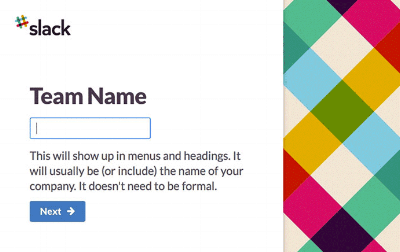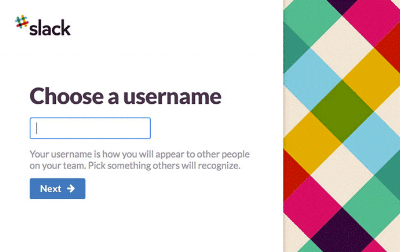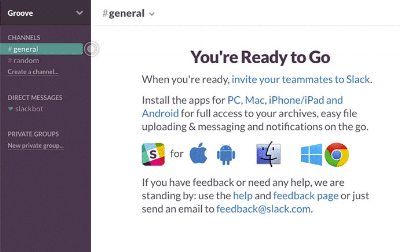Why do your customers stay with you? Is it because they think you’ve got a great website? Is it because it was easy to purchase from you? Is it because you post cute memes on your Twitter account.
It’s unlikely.
In the world of SaaS and B2B your customers purchase from you because they think you can best solve a problem they have within their particular time/financial/operational constraints. They stay with you because you continue to meet their needs.
Quite simply, your customers come to you with a set of expectation. If you meet their expectations they’re happy to stay with you. If their expectations are exceeded they’re delighted to stay with you. If you fall short of their expectations you’ll never know. They’ll be gone.
When you help your customers succeed and become a partner in their success you both win.
The old news is good news
Minimising churn is mission critical to SaaS providers.
We all know now that the cost of retaining a customer is at least 6x less than acquiring a new one. This comes with a double dose of good news – it costs less to make more. Even small improvements on the length of your customer’s lifetime can make a big impact on your bottom line.
It’s worthwhile, if you haven’t already, to work out the lifetime value of your customers. This guide by ChartMogul gives an in-depth look at calculating LTV, but a simple method is:
LTV = Average revenue per account (ARPA) x Avg. length of relationship.
If your customers spend $10 a month with you and stay for an average period of 8 months, the LTV is $80. If you could retain your customers for a whole year your LTV is suddenly $120. With 10,000 customers that would mean an increased revenue of $400,000.
Also consider the value of each customer beyond purchase. When you help your customers succeed you turn them into more than just a retention number, you turn them into ambassadors for your brand. The longer customers are retained the more likely they are to become brand evangelists; referring and recommending you to others or, as they change companies, taking your SaaS with them. This is harder to qualify but equally important.
Start investing in their success before they become a customer.
Your customer retention strategy and customer success strategy should start before your prospects even become customers. Neil Patel talks about the ‘Aha moment’. The moment you deliver what you promised. There is no reason this can’t happen before they sign up with you. Consider free trials or a sandboxed version so they can taste before they commit.
But it’s important not to just leave it to the Gods. Check in with them, see how they’re going, ask what’s working/what’s not working and prove yourself to be invested in their success, even before they start.
As a company The Revery doesn’t just market SaaS, we use it. All the time. One thing we’ve noticed is that the likelihood of us committing to a SaaS product is inextricably linked to the provider’s ability to adapt the product to our needs. We generally sign up for a free trial to something because it has most things on our wish list. It’s rare that a provider will have everything we’re after – but show us you’re committed to improving the product to meet all our needs and we’ll hang around.
Ignore our requests and we’ll start shopping around.
Empathetic On-boarding
The on-boarding process is a crucial time for new customers. They’ve seen that you can provide them with a service they’ve been looking for, but if your software or app doesn’t deliver results to them quickly, there’s a good chance they’ll bounce.
It’s estimated that around 40-60% of app users will bounce after the first time they login.
It can be frustrating to sign in to a new service only to be left without guidance on how to achieve what you came here to do. Your users should never be left wondering what they should do next or why they need to do it.
#Slack is a great example of how to hold your customers hand as they set up their account.



Images via Groove HQ
Remember, the customer has come to you to solve a problem. The longer it takes them to access that solution, the more likely they are to leave you.
Create a 30, 60 and 90 day on-boarding plan including in app/software prompts, emails, phone calls and, where possible, training sessions.
Stop the leaking boat.
You will leak customers. It’s inevitable. But there’s a difference between natural attrition and a problem with your service.
Take a look at your customer journey and see if there are common times or stages that your customers are leaving. It could be that:
-
You are not delivering on your brand promise.
-
You are not delivering on your product or service promise.
-
You delivered on your promise but their needs have changed.
-
You have delivered on your promise and they don’t need you any more.
Your customer retention strategy needs to continually monitor leaks to find out what is stopping your customers from succeeding with you.
According to one study an improvement of 1% in churn rate could increase a company’s value by 12% in 5 years.
Don’t stop caring.
SaaS can learn a lot from the failures of financial services. I have changed mortgage providers, health insurers and car insurers countless times because someone is always offering me a better deal. I’m wooed with discounts, and value adds, but then, once I’m in, the love stops. And so I swap as soon as the next shiny offer comes along.
The same theory applies to your customers. Woo them in and then forget them at your own peril.
Lisa Claes, ING Direct’s former Executive Director of Customer Delivery has said, “Banks generally are really good at chasing the new customer and rewarding new customers over existing ones…That wasn’t fair. So we have re-oriented our proposition to push value from the front end and spread across all of the customer value chain.”
ING Direct, has become the master of customer care, using their analytics to provide meaningful, timely and – above all else – helpful offers. The began increasing their monthly offers from 40 a month to 200, which resulted in a 45% year on year increase in cross-sell purchases and saw a doubling in their online mortgage applications.
Every time a customer calls you, messages you, or reaches out to you on social media there should be big flashing red lights that tell your customer service people “This person is important!”
Become a partner.
I recently interviewed the client of one of our clients. They’re a major law firm that were part way through their journey to the Cloud. This was their second attempt. Their first try was with an organisation that just didn’t understand them, their culture or why applying Cloud to a law firm was different to a financial services firm. They got rid of them and then took on our client.
The difference was immediately obvious. Our client sent a team to sit in their office, ask questions, listen and understand their unique set of challenges. They were 100% focused on the firms’ goals. It was not about completing a transaction, they genuinely wanted the firm to succeed. And when the firm did, they celebrated. They celebrated little wins, big wins and even personal wins. It became a true partnership.
The upshot is that the firm is now looking for more projects to do with our client – and recommending them to their network. The relationship they have built by being a partner, instead of a supplier, is invaluable.
Surprise and delight.
Richard Branson, arguably one of the kings of customer service says, “The key is to set realistic customer expectations and then not to just meet them, but to exceed them – preferably in unexpected and helpful ways.”
You’ve got the memo; deliver above and beyond the customer’s expectations. Surprising and delighting doesn’t have to be an expensive exercise. Free upgrades, bonus features, free training, even just a phone call every now and then can create all sorts of warm fuzzies. For every dollar spent your customers will feel like they are getting above average value.
Reduce your customer’s effort.
We could learn a lot from Oscars’ speeches. The recurring theme (apart from OH MY GOSH this is such a surprise!!!!) is the long list of thank you’s the winner has. A vision and a purpose may be driven by one person, bur rarely is it achieved alone. As an investor in your customer’s success you are there to support them, help take the load, make life a little easier for them to succeed.
In SaaS we already know the importance of good UX and UI, but what about making problem solving easier for your customers?
A well trained, empathetic call centre is a good place to start. Man your agents with technology that helps them answer phones faster, get the information customers need quicker and satisfy their issues with lightning speed.
Support your call centre and your customers with self-service tools such as Membership Centres, Whitepapers, How-To’s and Help Communities can mean giving customers easy access to critical information how and when they need it. You can be there for them at 3am in the morning, even if your staff are all tucked up in bed.
Need to ship hardware to them? Express deliver it. The longer your customers wait the longer it is until they succeed.
Be a human.
Building a partnership with a customer is about building relationships. Usually it’s between them and your company. But what if you could afford to actually make it between them and a person. A single point of contact between your business and immediately your relationship is personalised. When they need help, they can call a friend, not a contact centre.
At the end of the day, as SaaS companies fight it out for territory in the marketplace, your competitive edge may not be your product. It may very well be your customer retention strategy; going above and beyond servicing customers and partnering them in success.




